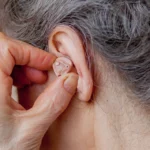First, it’s important to understand the different types of liposuction available. There are traditional liposuction procedures as well as newer, more advanced versions, such as laser-assisted liposuction. It’s important to research the different types of liposuction and understand which one is right for you.
Second, it’s important to find a reputable surgeon. Look for a qualified surgeon who has experience performing the type of liposuction procedure you’re interested in. Ask for referrals from your friends or family and research online to find out more about the surgeon’s qualifications and experience.
Third, it’s important to consider the costs of the procedure. Liposuction is an expensive procedure, so it’s important to do your research and get an idea of what the costs will be. Make sure to ask about any discounts or packages that the surgeon may offer.
Finally, it’s important to ask questions and get as much information as possible. Before you decide on a liposuction procedure, make sure to ask your surgeon about the risks and potential side effects. Make sure to get a full understanding of the procedure before you commit.
By following these tips, you can find the best liposuction procedures in 2023. Research the different types of liposuction, find a reputable surgeon, consider the costs, and get as much information as possible. With the right information and the right surgeon, you can find the right liposuction procedure for you.









